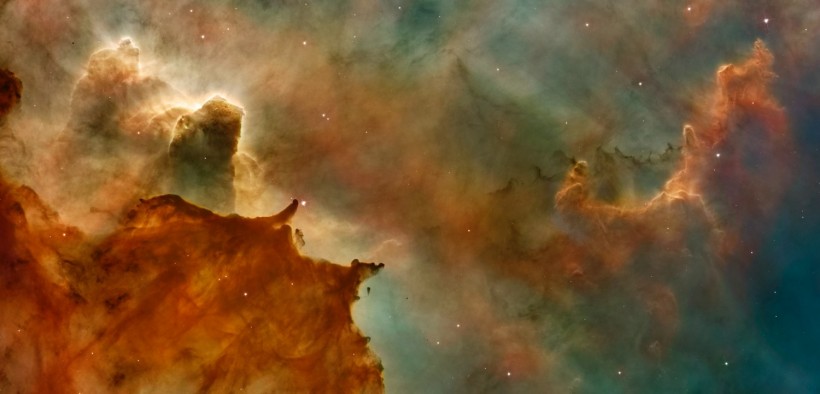The James Webb Space Telescope (JWST) has been known for making numerous discoveries in the realm of outer space. Now, another discovery has been born as the telescope found 1,000 light-year-away signs of carbon crucial to life in the star system.
Discovery of CH3+ Molecules Light-Years Away
According to Live Science, atoms are the building blocks of everything from molecules to DNA. As such, the James Webb Space Telescope discovered the existence of the methyl cation (CH3+) molecule light-years away.
The astronomers working on the study detailed their findings in the journal Nature, published on June 26. The molecules were found on d203-506, the classification for the protoplanetary disk, as explained further by NASA, considered an infant solar system.
As such, Live Science reports that the findings were about 1,350 light-years away from Earth, located in the Orion Nebula. The discovery couldn't have been possible without the help of one of NASA's most powerful space observation tool, the James Webb Space Telescope.
Astronomer Marie-Aline Martin-Drumel, the co-author of the study, who is an astronomer at the University of Paris-Saclay, described the findings and their importance in a statement seen in the NASA article.
As such, she noted that the detection validates Webb's sensitivity and further cement the importance of CH3+ and its importance in interstellar chemistry.
ALSO READ: Buck Moon To Occur in July: Here's What To Expect in the First Full Supermoon of 2023
Planet Formation and UV
Per Live Science, protoplanetary disks are often surrounded by high-energy ultraviolet radiation during the early stages of planet formation. Such radiation mirrors that of the sun, coming from nearby young stars and causing sunburns.
UV radiation is deadly for carbon-based molecules as its energy level could break them apart. However, the new study shows that UV radiation could play another important role, the formation of methyl cation.
With the help of UV radiation, the energy levels could be enough to kick-start organic chemistry, potentially birthing complex carbon molecules. Live Science notes that this would also potentially be the backbone behind a growing solar system's seeds for life.
Astronomer Oliver Berné, the lead study author, who is from the French National Center for Scientific Research, gave a statement regarding the discovery of UV radiation's functions.
He said the discovery of UVs changed protoplanetary disk chemistry, describing the role it could play in the early origins of life stages.
Previous Molecule -Discoveries
Live Science clarifies that this isn't the first time the Webb Telescope discovered remarkable outer space molecules.
Previous discoveries found complex organic molecules 12.3 billion light-years from Earth. As such, the JWST also came across other important discoveries, like frozen water on a comet near Earth and ice molecules.
However, this was the first time that methyl cation was found in space. Particularly, its discovery of CH3+ key emission lines.
RELATED ARTICLE: Experts Propose to Build a Next-Generation Telescope After the Collapse of the 60-Year-old Arecibo Observatory
Check out more news and information on Space in Science Times.




![Earth's Quasi-Moon Kamo‘oalewa Could Originate From Lunar Surface Not Asteroid Belt [Study]](https://1721181113.rsc.cdn77.org/data/thumbs/full/53275/89/56/50/40/earths-quasi-moon-kamo-oalewa-could-originate-from-lunar-surface-not-asteroid-belt-study.png)










